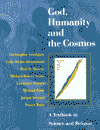The Beginnings of Big Bang TheoryIn the 1920s astronomers were able to show that some nebulae (clouds of luminous gas and dust) were too far away to be part of the Milky Way - they were island universes or galaxies in their own right. One of the discoverers of extragalactic objects, Edwin Hubble, went a stage further. In 1924 he announced the discovery that light from distant galaxies was systematically redder than light from nearby galaxies and that the degree of red shift was proportional to the distance. The simplest explanation for this red shift is that it is a case of the Doppler effect. This is the phenomenon that causes the pitch of a train whistle to vary as the train approaches or recedes. According to this explanation, the light is reddened because the galaxies are moving away from us. Since the degree of reddening is also a measure of the speed of recession, Hubble was able to show that more distant galaxies are receding from us faster than nearby ones. At first sight this observation might suggest that the Earth was located at the centre of some cosmic explosion. However, the fact that all motion is relative implies that observers elsewhere in the universe would make similar observations. This observation is consistent with an expanding universe, To illustrate this one might paint spots on a balloon and blow it up, As the balloon expands, the spots recede from each other and more distantly separated spots recede more rapidly. Extrapolating backwards in time from the observation that the universe is expanding leads to the suggestion that there might have been a time in the distant past (about 10-20 billion years ago) when the entire universe was concentrated into a single point. This point would be unimaginably hot and dense. At this ‘t=0’ the universe would begin to expand rapidly, if not violently. As it expands and cools, matter as we now know it begins to appear. Small variations in the density of that matter lead to condensation and the eventual formation of stars, galaxies and planets. Gradually the mutual gravitational attraction of matter slows the expansion of the universe. The result is the basic picture of the universe as portrayed by modern cosmology.
Email
link | Feedback |
Contributed by: Dr. Christopher Southgate |




